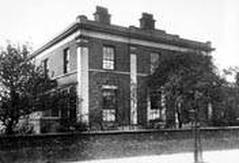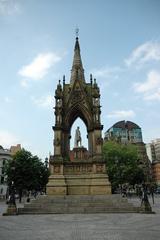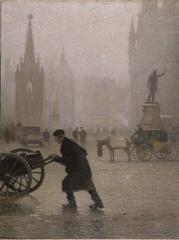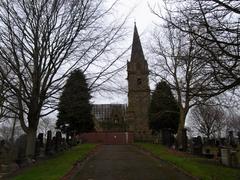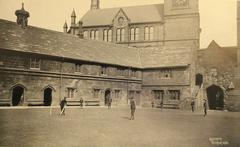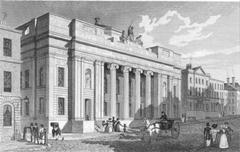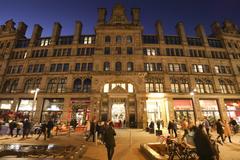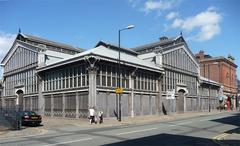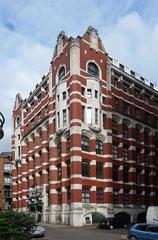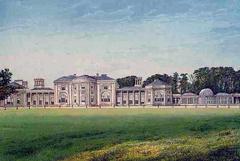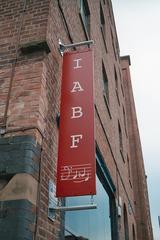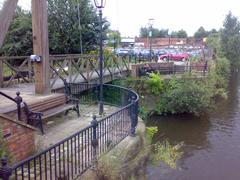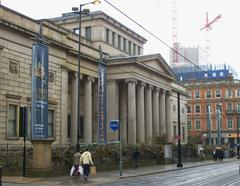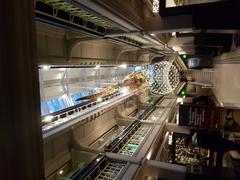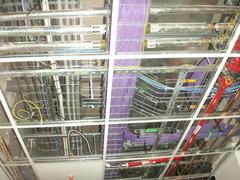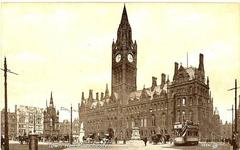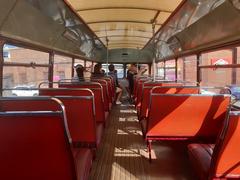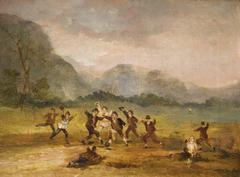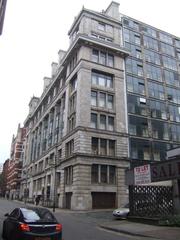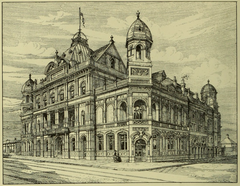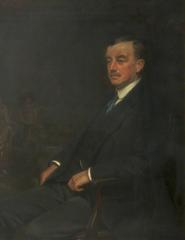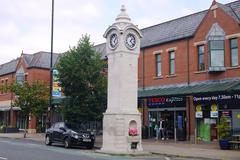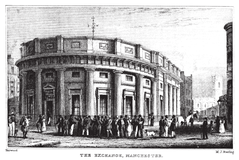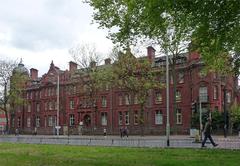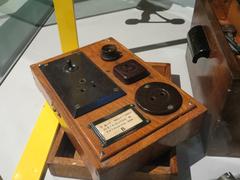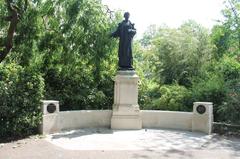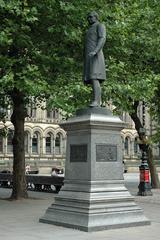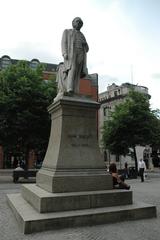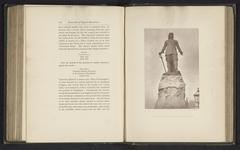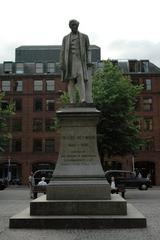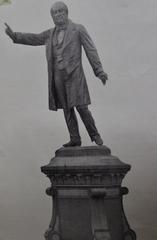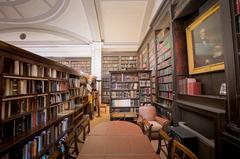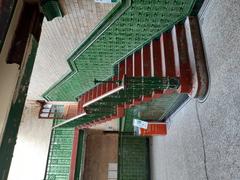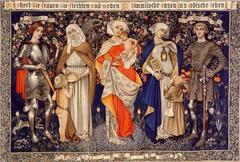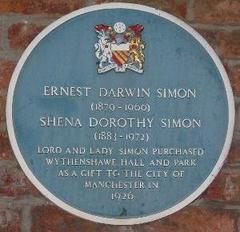Church of St Mary Hulme Manchester: Visiting Hours, Tickets, and Historical Sites Guide
Date: 04/07/2025
Introduction
The Church of St Mary Hulme in Manchester stands as a prominent emblem of Victorian Gothic Revival architecture and a testament to the city’s industrial and cultural transformation. Built in the mid-19th century to accommodate the spiritual and educational needs of a rapidly growing population, especially Irish immigrants drawn by Manchester’s thriving textile industry, the church was funded and realized through the philanthropy of the Egerton family. Designed by renowned architects, its striking spire and intricate stonework continue to dominate the Hulme skyline.
Although no longer functioning as an active place of worship, the church remains a Grade II* listed building. Today, it serves as a symbol of Manchester’s resilience and adaptive reuse, seamlessly blending historical preservation with modern community and residential life. This comprehensive guide provides essential information on St Mary’s history, architecture, visiting hours, ticketing, accessibility, and tips for exploring nearby attractions. Whether you are an architecture enthusiast, history buff, or visitor, the Church of St Mary Hulme offers a unique and enriching experience that bridges Manchester’s past and present (Manchester Victorian Architects, Discover Walks, Historic England Listing).
Table of Contents
- Introduction
- Historical Background
- Architectural Features and Conservation
- Visiting Information
- Cultural Significance and Community Engagement
- Nearby Attractions and Travel Tips
- Visitor Experience
- Adaptive Reuse and Sustainability
- FAQ
- Practical Tips for Visitors
- Visuals and Media Suggestions
- Internal Linking Suggestions
- Visitor Safety and Etiquette
- Additional Resources
- Summary Table: Key Visitor Information
- Conclusion and Call to Action
Historical Background
Origins and Founding
St Mary’s Church was conceived amid the Victorian era’s urban boom, responding to the scarcity of places of worship in Hulme. By the 1850s, the area’s population had soared beyond 53,000, but church seating was limited to just over 4,200. Philanthropist Wilbraham Egerton donated the land and endowed the construction, with his son William Tatton Egerton ensuring its completion after Wilbraham’s death. The church was part of a larger mission to enhance both spiritual life and education in the community, with adjacent schools built for girls and infants (Manchester Victorian Architects).
Architectural Design and Construction
Designed by E. H. Crowther of Bowman and Crowther, St Mary’s exemplifies the Early Decorated Gothic Revival style. The church’s parallelogram plan measures 140 by 69 feet, with a soaring nave separated from the aisles by octagonal piers and sharply pointed arches. Its west-end tower and spire, strategically placed for prominence, rise 241 feet (73 meters), making it one of the tallest churches in the UK (Manchester Victorian Architects, Wikipedia).
Construction Challenges and Consecration
Construction began in 1853, but quicksand found in the foundations required significant engineering solutions, causing delays and increased costs. The church was finally consecrated on 13 November 1858 by Bishop James Prince Lee, with space for 1,000 worshippers—a blend of reserved and free seats, reflecting Victorian ideals of accessible worship (Manchester Victorian Architects).
Community Role and Later History
St Mary’s quickly became a community hub, supporting educational and social welfare initiatives. The Egerton legacy extended to the construction of a rectory and schools, underlining the Victorian belief in the church’s role as both a spiritual and social anchor. The church maintained its status until the late 20th century, surviving periods of urban decline and seeing its congregation dwindle before being granted Grade II* listed status in 1974 (Powers UK PDF).
By the late 20th century, the church was repurposed into residential apartments. Laser scanning technology was employed to preserve its exterior, stained glass, and original stonework (Powers UK PDF).
Architectural Features and Conservation
St Mary’s is distinguished by its bold Gothic Revival features: pointed arches, richly carved stonework, and a commanding spire. The exterior, built from local sandstone, is adorned with buttresses, lancet windows, and a rose window above the entrance. The nave, chancel, and arcades showcase the Early Decorated style, with coupled two-light windows in the clerestory.
Though the church’s interior is now inaccessible due to residential conversion, conservation efforts have preserved its façade and significant architectural elements, aided by digital archival methods (Historic England Listing). The building continues to be a local landmark and a touchstone of Manchester’s architectural heritage.
Visiting Information
Location: Junction of Upper Moss Lane and Boston Street, Hulme, Manchester.
Public Access:
- The church is currently not open for public interior visits due to its conversion into apartments (LAN-OPC).
- The exterior can be viewed at any time.
Tickets:
- No ticket or entry fee is required for exterior viewing.
- No guided interior tours are available.
Accessibility:
- The area surrounding the church is accessible by public transport, with nearby bus and tram stops.
- Walking and cycling are also convenient options.
- Street parking may be limited; check local restrictions.
Special Note:
- Please respect residents’ privacy and do not attempt to enter the building.
Cultural Significance and Community Engagement
St Mary’s has long been a beacon for Manchester’s Catholic and wider community, serving as a venue for religious, educational, and social initiatives. Although interior access is now limited, its external presence continues to contribute to local identity and pride. Heritage groups and local organizations celebrate the church’s history through archival exhibitions and community events (Manchester City Council).
Nearby Attractions and Travel Tips
Enhance your visit to Hulme with other local attractions:
- John Rylands Library: Neo-Gothic architecture and rare manuscripts (Visit Manchester).
- Manchester Cathedral: A short tram ride away, renowned for medieval architecture (Manchester Cathedral).
- The Whitworth: Art gallery in a park setting.
- Science and Industry Museum: Explores Manchester’s industrial legacy (Science and Industry Museum).
Travel Tip: Comfortable walking shoes are recommended for exploring Hulme and central Manchester.
Visitor Experience
While interior access is unavailable, visitors can appreciate the church’s exterior grandeur, especially its spire and stonework. The site is ideal for architectural photography. Researchers and history enthusiasts can consult parish records and historical documents at the Manchester Archives (National Archives).
Guided walking tours focusing on Manchester’s Victorian architecture often include St Mary’s as a highlight (Visit Manchester).
Adaptive Reuse and Sustainability
St Mary’s serves as a case study in adaptive reuse, collaborating with the University of Manchester’s MA in Architecture and Adaptive Reuse program (University of Manchester – MA Architecture and Adaptive Reuse). Sustainable modifications include energy-efficient lighting and rainwater harvesting, supporting both heritage and environmental goals (University of Manchester – Environmental Sustainability).
The church gardens are maintained by volunteers, promoting biodiversity and community engagement.
Frequently Asked Questions (FAQ)
Q: Can I visit the interior of the Church of St Mary Hulme?
A: No, the church’s interior is not open to the public due to its conversion into apartments.
Q: Are guided tours available?
A: No guided tours of the interior are available, but guided walking tours of Manchester’s architectural heritage may feature the church’s exterior.
Q: Is there an entry fee?
A: No fee is required for exterior viewing.
Q: How do I get there?
A: The church is accessible by bus and tram, with stops nearby. Street parking is limited.
Q: Is the site accessible for visitors with mobility needs?
A: The surrounding area is generally accessible, but check local transport and pavement conditions.
Practical Tips for Visitors
- Photography: The church’s exterior provides excellent photo opportunities, especially of its spire and stone details.
- Respect Residents: Please be mindful of the building’s residential status.
- Research: For in-depth historical exploration, access records at Manchester Archives (National Archives).
- Combine Visits: Plan to see other local attractions for a fuller Manchester experience.
Visuals and Media Suggestions
- Include high-quality images of the church’s exterior, with alt tags such as “Church of St Mary Hulme Gothic Revival spire.”
- Use interactive maps to highlight nearby attractions and public transport routes.
Internal Linking Suggestions
Visitor Safety and Etiquette
- Safety: Hulme is generally safe, but standard urban precautions apply.
- Etiquette: Respect privacy by not trespassing on residential property and avoiding intrusive photography.
Additional Resources
- Manchester Victorian Architects
- Historic England Listing
- Manchester City Council – Places of Worship
- National Archives
- Church of St Mary Hulme Official Website
Summary Table: Key Visitor Information
| Feature | Details |
|---|---|
| Location | Upper Moss Lane & Boston Street, Hulme, Manchester |
| Architectural Style | Gothic Revival, Early Decorated |
| Spire Height | 241 feet (73 meters) |
| Year Consecrated | 1858 |
| Current Use | Converted to apartments (no public interior access) |
| Archives Access | Manchester Archives and Local Studies |
| Nearest Attractions | John Rylands Library, Manchester Art Gallery, The Whitworth |
| Accessibility | Public transport, walking, cycling; limited street parking |
| Visiting Hours | Exterior accessible at all times |
| Entry Fee | None for exterior viewing |
Conclusion and Call to Action
The Church of St Mary Hulme is a vital piece of Manchester’s heritage, celebrated for its architectural splendor, historical significance, and community legacy. While interior access is limited, its exterior and the surrounding Hulme area offer a rewarding visit for anyone interested in Victorian history and architecture. For updates on Manchester historical sites, guided tours, and heritage events, download the Audiala app and follow our social channels. Explore related posts and official resources to enrich your understanding of Manchester’s rich cultural tapestry.
References
- This guide draws upon authoritative sources and official records. For further reading and planning, consult the following:
